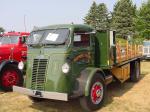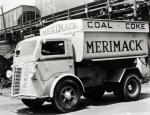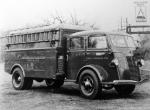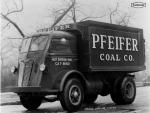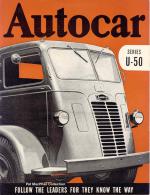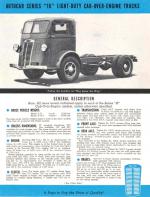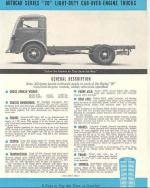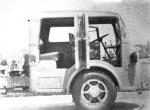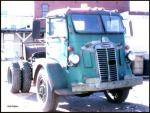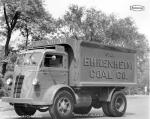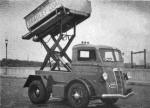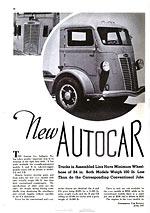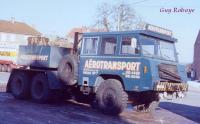Autocar » UA/UB/UR, U-10/U-20/U-30/U-40/U-50
In 1937, the Autocar Co. took another important step in its invasion of the light duty field. It presented conventional models A and B in cab-over-engine versions - UA and UB. What is more, these models officially called "cab-over-engine" in contrast to the other Type U models, which were "engine-under-the-seat". Despite heavier steering gears and front axles the new c.o.e. models actually weight 100 lbs. less than their conventional counterparts. The specification of other units is the same. The prices for conventional and c.o.e. models were the same.
The model UA had a Hercules JXB engine of 263-cu. in. displacement, giving 163 lb. ft. of torque and 68 hp at 2800 r.p.m. Behind the engine was a Clark 185F four-speed transmission. The rear axle was a Timken 54412 of spiral bevel drive and full-floating design. It had also vacuum-actuated hydraulic brakes on all wheels. The engine of the UB was a Hercules JXC which had 282-cu. in. of piston displacement. Its horsepower output was 73 at 2800. The torque was 175 lb. ft. The UB had the same transmission as the UA. The rear axle was the same design, but a larger Timken. Wheelbases for both models were 84 in., 106 in. and 124 in.
By 1940, the indexing of trucks was changed and the number of modifications increased. The range included models with a numerical index from 10 to 50. The lightest U-10 with a GVW of 13,500 kg was equipped with 73 hp engine, ie this version was the renamed UB model. The U-20 had a GVW of 16,000 kg and 78 hp engine. The U-30 with a GVW of 18500 kg received 81 hp engine. GVW of the model U-40 was 20,000 kg, and the engine output was equal to 89 hp. The U-40 was available in a tractor version U-40-T. Finally, the heaviest in the range was U-50 model with a GVW of 25,000 kg and the same 89 hp engine.



